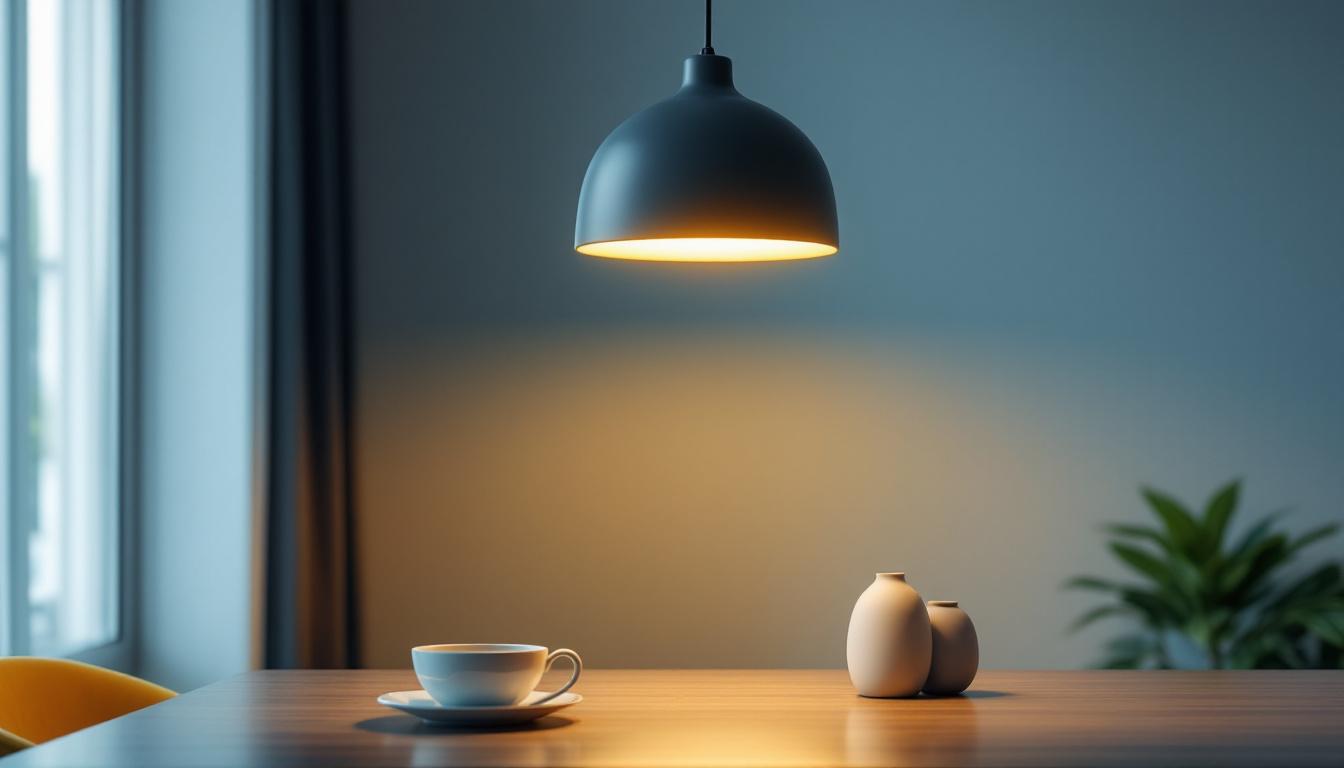
In the ever-evolving world of lighting solutions, LED pendant lights have emerged as a modern staple in both residential and commercial spaces. Their sleek designs and energy efficiency not only enhance aesthetic appeal but also contribute to significant cost savings. For lighting contractors, understanding how to leverage these advantages can maximize profitability in installations. This article delves into the benefits of LED pendant lights, their installation considerations, and strategies for optimizing profitability.
LED pendant lights are suspended fixtures that provide focused illumination while serving as decorative elements in a space. Available in various styles, sizes, and designs, these lights can enhance the ambiance of a room while providing functional lighting. Their versatility makes them suitable for various applications, from dining areas to office spaces. Whether you’re looking to create a cozy atmosphere in a kitchen or a professional environment in a conference room, LED pendant lights can be tailored to meet those needs.
Unlike traditional incandescent or fluorescent lights, LED pendant lights use light-emitting diodes, which are known for their longevity and energy efficiency. This technology not only reduces electricity consumption but also lowers maintenance costs, making them an attractive option for both contractors and clients. Furthermore, many LED pendant lights come with adjustable brightness settings and color temperature options, allowing users to customize the lighting to suit different moods and activities, from bright task lighting to soft, ambient illumination.
One of the primary advantages of LED pendant lights is their energy efficiency. These fixtures consume significantly less power than traditional lighting options, leading to lower utility bills for clients. Additionally, the long lifespan of LED lights—often exceeding 25,000 hours—means fewer replacements and reduced waste, aligning with sustainability goals. This longevity is particularly beneficial in commercial settings where lighting is used extensively, as it minimizes disruption and maintenance costs over time.
Moreover, LED pendant lights come in a wide range of designs, allowing contractors to cater to diverse client preferences and interior aesthetics. Whether a client prefers a minimalist look or a more elaborate design, there is a suitable LED pendant light available. This flexibility can help contractors secure more projects by appealing to a broader audience. Beyond aesthetics, many modern LED pendant lights also incorporate smart technology, enabling users to control the lighting remotely via smartphone apps or voice-activated devices. This integration not only enhances convenience but also allows for energy management, making it easier for users to optimize their lighting based on their daily routines.
Before installation, careful planning is essential to ensure optimal placement and functionality of LED pendant lights. Consider the purpose of the lighting: is it for task lighting, ambient lighting, or decorative purposes? Understanding the intended use will guide the selection of the appropriate fixtures and their placement.
Additionally, it is crucial to take into account the height of the ceiling and the size of the space. Pendant lights should hang at a height that provides adequate illumination without obstructing views or creating hazards. For dining areas, a common guideline is to hang the light 30 to 36 inches above the table, while in living spaces, the height may vary based on design preferences. It’s also worth noting that the style of the pendant light can influence how it interacts with the surrounding decor; a larger fixture can serve as a bold statement piece, while smaller, clustered pendants can create a more intimate atmosphere.
Furthermore, consider the color temperature of the LED bulbs you choose. Warmer tones (around 2700K to 3000K) can create a cozy and inviting environment, ideal for living rooms and dining areas, while cooler tones (4000K to 5000K) are better suited for workspaces where clarity and focus are paramount. Taking the time to evaluate these factors will not only enhance the aesthetic appeal of the space but also improve the overall functionality of the lighting scheme.
When installing LED pendant lights, electrical considerations play a critical role. Contractors must ensure that the existing electrical infrastructure can support the new fixtures. This includes checking the wattage and voltage requirements of the LED lights, as well as ensuring that the circuit can handle the load.
Moreover, using compatible dimmers can enhance the versatility of LED pendant lights. Dimming capabilities allow clients to adjust the brightness according to their needs, providing both functionality and energy savings. It is essential to select dimmers specifically designed for LED technology to avoid flickering and ensure optimal performance. Additionally, incorporating smart lighting controls can elevate the user experience, allowing for remote operation and scheduling through mobile apps or voice commands. This modern approach not only adds convenience but also promotes energy efficiency by enabling users to turn off lights when they are not needed.
Lastly, safety should never be overlooked during installation. It is advisable to use fixtures that are rated for the specific environment, especially in areas prone to moisture, such as kitchens or bathrooms. Ensuring that all connections are secure and that the fixtures are properly grounded can prevent electrical hazards and prolong the lifespan of the lighting. By adhering to these electrical considerations, you can create a safe and efficient lighting solution that enhances the beauty and functionality of your space.
One of the most effective ways to maximize profitability in lighting installations is through cost-effective sourcing of LED pendant lights. Establishing relationships with reputable suppliers can lead to better pricing and access to the latest designs. Bulk purchasing can also yield discounts, enabling contractors to pass savings onto clients while maintaining healthy profit margins.
Additionally, staying informed about industry trends and emerging technologies can help contractors identify innovative products that appeal to clients. This knowledge can lead to upselling opportunities, where contractors can offer premium fixtures that enhance the overall project value.
Efficient project management is key to maximizing profitability. This includes accurate project estimation, scheduling, and resource allocation. By using project management tools, contractors can streamline workflows, reduce delays, and ensure that installations are completed on time and within budget.
Moreover, effective communication with clients throughout the installation process fosters trust and satisfaction. Keeping clients informed about timelines, potential challenges, and solutions can lead to positive referrals and repeat business, further enhancing profitability.
Marketing plays a vital role in attracting new clients and securing projects. Showcasing successful installations of LED pendant lights can demonstrate expertise and inspire potential clients. High-quality photographs and case studies can be shared on websites, social media platforms, and marketing materials to highlight the benefits and aesthetic appeal of these fixtures.
Additionally, participating in local home shows or industry exhibitions can provide valuable exposure. Engaging with the community and showcasing innovative lighting solutions can help contractors establish a strong reputation and attract new clients.
In today’s digital age, having a robust online presence is essential for contractors. A well-designed website that showcases services, testimonials, and a portfolio of completed projects can significantly enhance visibility. Search engine optimization (SEO) strategies can also help attract organic traffic, leading to more inquiries and potential projects.
Social media platforms offer another avenue for marketing LED pendant light installations. Sharing tips, design ideas, and project highlights can engage potential clients and position contractors as industry experts. Regular interaction with followers can build a loyal community and encourage referrals.
Educating clients about the advantages of LED pendant lights is crucial for driving sales and ensuring satisfaction. Providing information on energy savings, longevity, and design options can help clients make informed decisions. This knowledge not only enhances the client experience but also positions the contractor as a trusted advisor.
Workshops or informational sessions can be organized to engage clients and showcase the latest trends in lighting design. By demonstrating the versatility and benefits of LED pendant lights, contractors can foster a deeper appreciation for the products they offer, leading to increased sales and referrals.
Building long-term relationships with clients is a cornerstone of a successful lighting contracting business. Following up after installations to ensure satisfaction and address any concerns can lead to repeat business and referrals. Offering maintenance services or periodic check-ins can further solidify these relationships and create additional revenue streams.
Additionally, soliciting feedback from clients can provide valuable insights into their experiences. This information can be used to improve services and offerings, ensuring that contractors remain competitive in the market.
LED pendant lights represent a modern and efficient lighting solution that can significantly enhance profitability for lighting contractors. By understanding the benefits of these fixtures, carefully planning installations, and employing effective marketing strategies, contractors can maximize their success in the competitive lighting industry.
From cost-effective sourcing to efficient project management and client education, there are numerous ways to optimize profitability in lighting installations. By staying informed about industry trends and maintaining strong relationships with clients, contractors can position themselves as leaders in the field, ensuring continued growth and success.
As the demand for energy-efficient and aesthetically pleasing lighting solutions continues to rise, embracing LED pendant lights will not only meet client needs but also drive profitability for lighting contractors. The future of lighting installations is bright, and those who adapt to these changes will undoubtedly reap the rewards.
Ready to elevate your lighting installations and maximize your profitability? Look no further than LumenWholesale. Our commitment to providing contractors with superior, spec-grade LED pendant lights at unbeatable wholesale prices ensures that you can deliver exceptional value to your clients. Say goodbye to inflated markups and hello to a vast selection of high-quality lighting solutions that meet the highest industry standards. With the added convenience of free shipping on bulk orders, LumenWholesale is your go-to source for premium lighting without the premium price tag. Don’t compromise on quality or cost—Wholesale Lighting at the Best Value is just a click away. Transform your lighting projects with LumenWholesale today.
Discover the top strategies lighting contractors use to maximize efficiency and performance with outdoor LED flood light bulbs that are 150-watt equivalents.

Discover essential tips and strategies for lighting contractors to effectively illuminate walk-in coolers.

Discover the must-know essentials of home control light switches for lighting contractors.

Discover the transformative advantages of LED panel lights for lighting contractors.